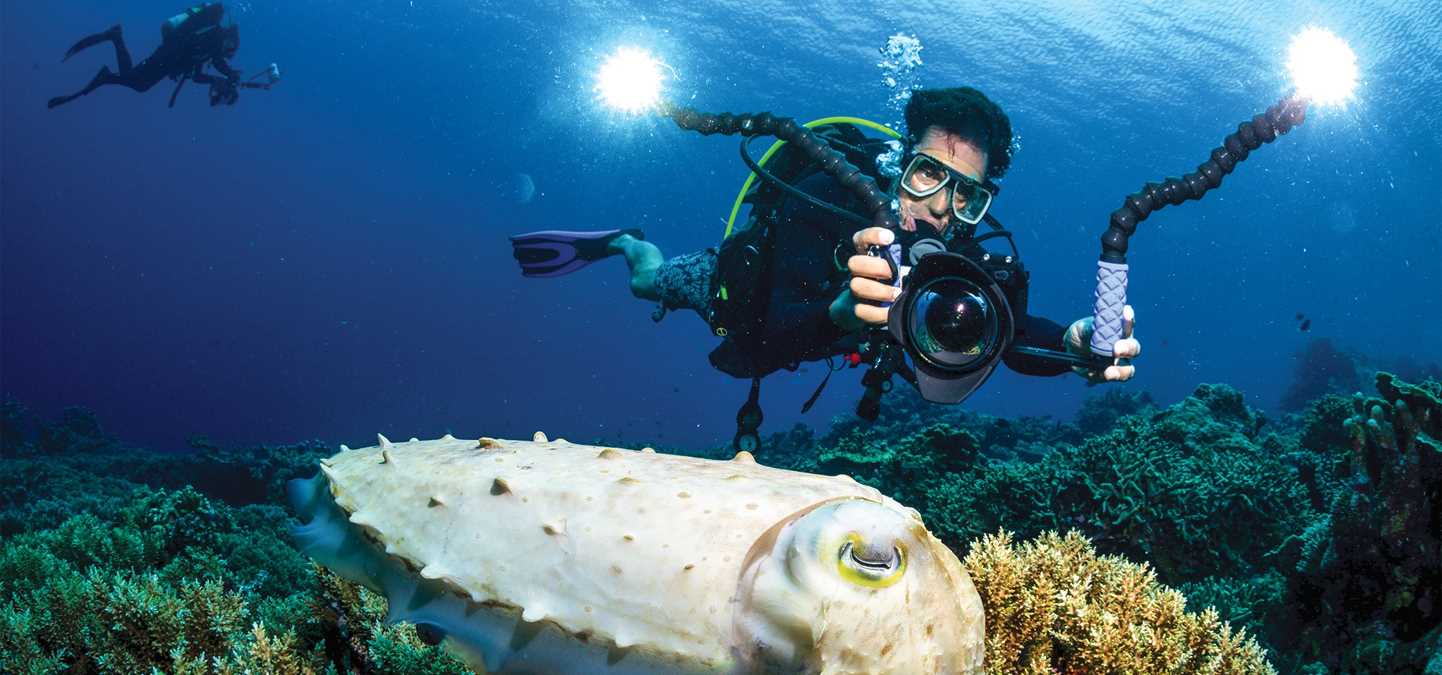CallTest +1.800.397.3348
Undersea
Undersea Specialists
The video came into focus as the ship’s lounge. Rapt guests were glued to the HD monitors mounted around the room.
“We’re only about 30 feet deep here,” undersea specialist Alyssa Adler’s voice came over the lounges speakers. “Let me turn on my lights so you can see the colors, there’s so much sediment in the water that you lose colors just a few feet below the surface.”
The lights came on and a bright red crab scurried across the seafloor. A yellow sea star that had to be two feet across clung to gray rocks. There were purple corals, swaying kelp, and a sea lion popped into the picture to get a look at Alyssa, or perhaps play in the air bubbles she was exhaling.
This brightly colored, vibrant undersea wasn’t in the tropics—these guests were aboard National Geographic Quest in Alaska.
Lindblad Expeditions is deeply committed to the undersea, which is why nearly every expedition aboard the National Geographic fleet sails with a specialist who dives to capture photos and video of the benthic world to share with guests.
In the tropics, where the water is warm and the undersea wonders are well known, the undersea specialists also serve as a divemasters to help certified guests scuba dive to get a firsthand view. And in the tropics each ship sails with snorkeling gear for all guests aboard. When guests choose not to snorkel or dive, they may join the undersea specialist for a cruise aboard a glass-bottom Zodiac to get a glimpse of the life that lies beneath. In this case the undersea specialist can offer a live voiceover to illuminate all that is seen.
Polar regions are far from a cold, lifeless stretch, the seas of Antarctica and the Arctic are surprisingly rich and colorful environments filled with astonishing life forms. Guests marvel at the unexpected wonders and the thought-provoking talks and conversations they inspire. In these regions the undersea specialist has another tool at their disposal to explore—an ROV capable of diving up to 1,000 feet deep to see places never before seen by humans. In Norway, the undersea specialist even discovered a cold-water coral previously unknown to scientists.
The video came into focus as the ship’s lounge. Rapt guests were glued to the HD monitors mounted around the room. ...
Read more
Expedition staff are subject to change.

